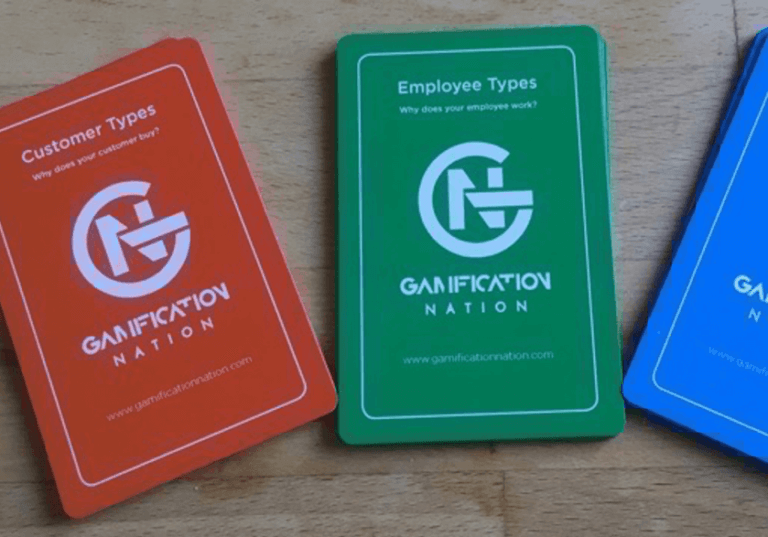Gamification or at least the term is being used by a lot of e-learning providers and learning management systems, to create the illusion that they have indeed created something that has game mechanics in it. In a recent experience with a technology provider, their idea of game mechanics was counter opposite to what we would recommend, the main difference was that we had done user analysis and interviews with people in the role the training was for. We had shared it with the provider but they never read it nor could they deduct from that what actually works.
We still see a lot of the superficial style gamification happening where people throw a bunch of random game mechanics without prior investigation into what is fitting in the culture, for the role and for the individuals targeted with the learning. Early buyers of this style of gamification are now turning to gamification designers like us because they have realised superficial and gimmicky doesn’t work. We know that some mechanics are an absolutely waste of time in some circumstances and highly appropriate in others. How we find out what to put in or not is through behaviour analysis, analytics, interviews and focused design workshops.
Now that the first wave of bad gamification is starting to realise it doesn’t work, a few of them will stop offering it as an option and run after the next big buzzword … big data maybe or machine learning or augmented or virtual reality. In any case those people will keep chasing the next bright shiny object and look to make a quick buck through it until they realise it isn’t their core competency and they have to start from 0 or re-invent themselves.
Those of us that do it thoroughly and well, will gain further fall-out business and will continue to grow our client base. I believe we have reached and even gone slightly beyond the tipping point in Europe where gamification has found a dedicated space in employee and learner engagement. The corporate professionals looking for solutions have also become wiser and are learning from those of them that have gone before. Word of failure just like all negatives travel a hell of a lot faster especially in the small world of L&D.
In my view the next wave of innovation will keep coming from edtech, unlike multinational corporations schools and teachers are often at the early cold-face of new users. They see trends and behaviours before the corporate sector sees them. The growth of smart devices from phones, watches to all sorts of robots will provide our next wave of interesting applications. Real world training by a specialist robot, because you are curious about a certain function, role or how something works. That instruction being added to your school report or development map in the cloud, which in a very smart way recommends further items based on previous choices and preferences you may have given it.
The days of classroom based learning are numbered. Even blended learning (classroom + online learning) will receive a stretch and the whole idea of the flipped classroom where the learner drives what he wants to do is a source of change. Traditional education was initiated to create workers for factories, that reality has dramatically changed. Digitisation makes work and learn anywhere whenever and wherever the individual wants a reality. Gamification has a role to play in the tracking and nudging forward towards skills mastery if the individual wants that choice or option. It can also open the gates to further discovery and positive reinforcement of effort put into mastery of new skills.
The superficial game mechanics will be lost in favour of more personalised and stylised messaging based on preferences, choices and consequences. The whole idea of learning with only positive feedback is an illusion that I hope will go away fast, because ultimately most of us learn more from the feedback that something was wrong, hurt or didn’t have the effect we wanted. It is how as children we explore the world and as adults we try to avoid experiencing the world. The power of gamification will be in the feedback loops and paths to mastery reinforcement.
What do you believe will be the next step in gamified learning?




